The Swinehart Farm – Part 3
A Going Concern (1902-1914)
By 1902 the Swinehart Farm was gaining a profile, as information about its place in the Yukon agricultural picture began appearing in newspaper articles and various types of reports. While the reports were relatively objective, the newspaper accounts, in the style typical of reporting at that time, often contained embellishments, errors, and perhaps even concoctions.
A June 1902 article in Dawson City’s Daily Morning Sun reported that “it may not be generally known, but as fine a farm as can be found anywhere is the Swinehart Farm. About forty acres of ground have been under cultivation for two years”. The article also said that “every visitor to the farm is received royally and enjoys himself in every way”.
In April 1903 the Yukon Sun published a rosy article on William Swinehart and his Fort Selkirk farm, reporting that he had 30 acres under cultivation and a large tract of meadow land. He was growing oat hay, “the finest feed that is available for horses”, as well as a large quantity of vegetables for sale to roadhouses and steamboats. In the spring he marketed potatoes in Dawson City, where he could get a good price for them by being three weeks ahead of produce coming from Whitehorse on steamboats, which had to wait for Lake Laberge to become ice-free. The article concluded with: “Mr. Swinehart has his whole family with him on the farm, and says he has as comfortable a home and as profitable a business as any man could reasonably wish for”.
A little over a month later, the same newspaper reported that William Swinehart would be arriving in Dawson by riverboat soon with five tons of potatoes for sale. The article also mentioned that Swinehart “had the distinction of having Prof. John Macoun, the eminent Canadian botanist, declare the potatoes grown on his farm at Selkirk to be the equal of any grown in America”. Macoun, the Dominion Geological Survey naturalist, had examined agricultural products from the Yukon that were sent to an exhibition in Ontario in the fall of 1902 to demonstrate the agricultural potential of the Territory.
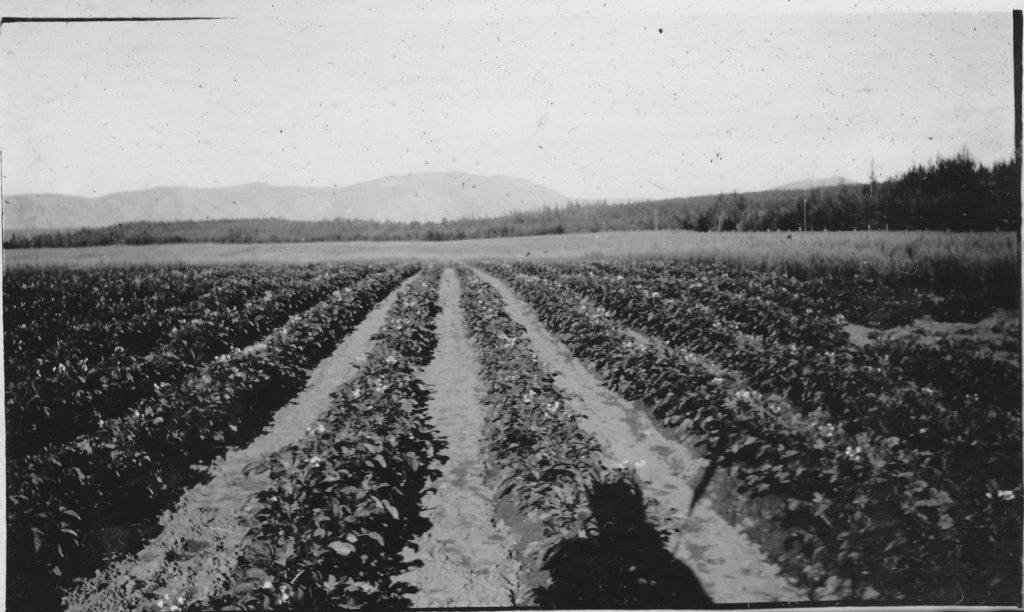
(Heather & David Ingrams collection)
A July 1903 article in the San Francisco Chronicle entitled “Making a Fortune on Klondike Farm” spoke glowingly of Swinehart’s five years as “a successful farmer in the north, becoming an enthusiastic believer in the agricultural possibility of the great Yukon valley”, and having “the most extensive farm in the British Yukon or Alaska”.
In the fall of 1903, Swinehart submitted exhibits to Dawson City’s Horticultural and Industrial Exhibition in the form of “oats five feet tall and heavy with grain, and wheat six feet tall”. The Dawson Daily News reported that “the specimens are among the finest of the kind ever produced in the Yukon”.
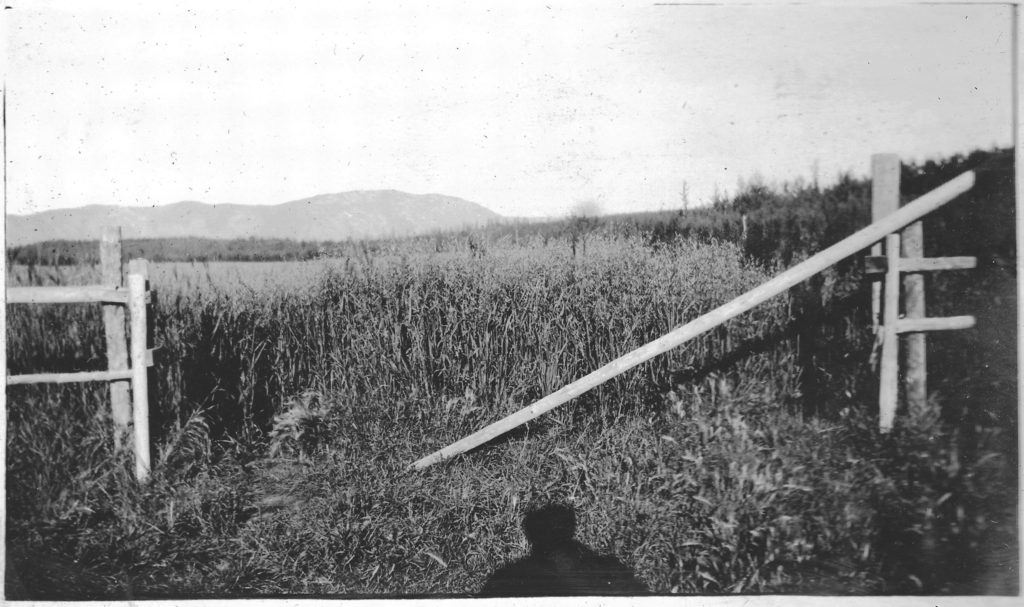
(Heather & David Ingrams collection)
A 1903 report by the Governor of Alaska stated that on two acres the previous year, the Swinehart Farm grew 11 tons of potatoes, nine tons of which were sold within six hours in Dawson City the following spring after the river opened to river transportation. It was noted that the farm’s location was “valuable for the ease and cheapness of reaching a hungry market”.
The Spokane Press in October 1905 carried relatively detailed information on the Swinehart Farm operation, the source of which was not stated. The article said that the Swineharts concentrate on field crops such as oats, hay and hardier field vegetables, which can be planted and cultivated with “horse tools”. Oat hay was said to be the chief crop because of the steady demand for it on the Whitehorse-Dawson stage line, which had hundreds of horses to feed. The article concluded by stating that “it is an exceptional season when the Swinehart Farm does not net its owners an income of $10,000”.
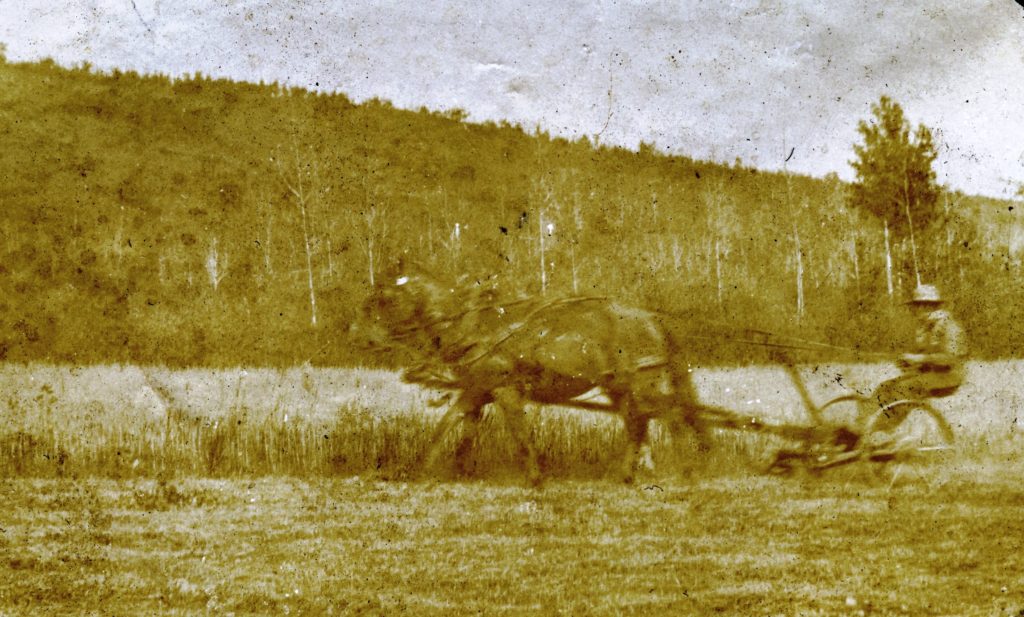
(Susan Coltrin collection)
An excerpt from a 1905 book by John Scudder McLain called Alaska and the Klondike, based on a 1904 trip through the region, says that “one farmer at [Fort Selkirk] is reported to have made a clear profit of $3,000 during the past year on his crops of hay and potatoes”. There can be no doubt that this reference was to the Swinehart Farm. McLain also reported that “his success is said to be encouraging others to seek their fortunes in agriculture at this point”. There may be some truth to this because Fort Selkirk soon became a center of homesteading activity along this section of the Yukon River as well as the lower Pelly River.
In a 1907 newspaper article based on statements by Governor John Brady of Alaska about the agricultural potential of that state, Brady referred to the success of William Swinehart of Fort Selkirk as an example. He said that Swinehart had taken nine tons of potatoes to Dawson City that spring and sold them for $300 per ton. In that same year, the annual report of Alaska Agricultural Experiment Stations made a reference to Fort Selkirk, “which place has been noted for the farming of W.H. Swinehart”. It is evident that William Swinehart’s agricultural endeavors were well known not only within the Yukon, but beyond it as well.
In September 1908 an article in the Dawson Daily News explored the historic and symbiotic relationship between mining and farming; miners need farmers to feed them, and miners give farmers a market. In the article, William Swinehart provided some thoughts about the virtues of farming, outlining why he believed that being a farmer is better than being a miner: “the most independent man on top of earth today is the farmer in Yukon. … one can watch his crop maturing which will bring him more than the average miner gets with all his life-shortening excitement and struggle”.
In truth, however, Swinehart himself tells a somewhat different story. In the years that followed, he along with his son Guy, his sons-in-law, his brother-in-law Ham Kline, and Billy Thompson dabbled in mining in the nearby Selwyn River watershed. They even petitioned the government, unsuccessfully, to assist financially in putting a wagon trail into that area. In the 1914 letter Swinehart wrote to his Wisconsin home town, he stated that “I have been farming here since 1898 with varied success, and would have plenty to spare if I had kept what money I made growing stuff for the gold seekers to eat; but in Rome one does as the Romans do, speculates in gold fields of course”.
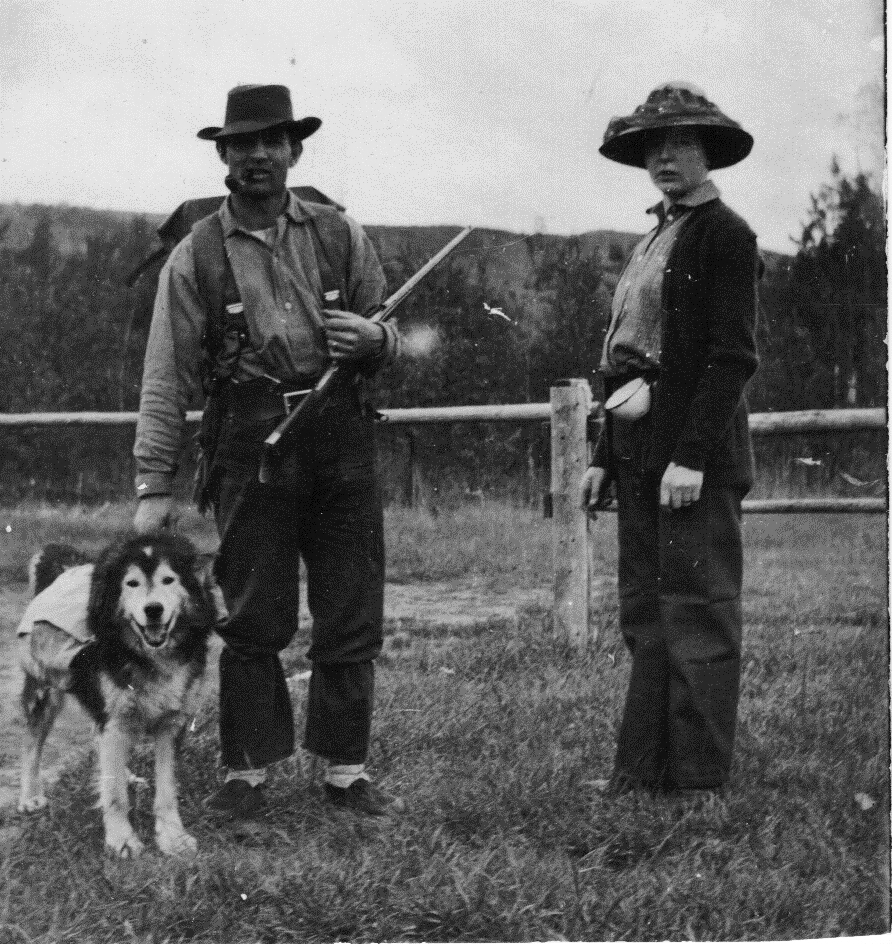
(Susan Coltrin collection)
Whatever embellishments or inaccuracies may have been contained in the articles and reports on the Swinehart Farm, it is obvious that William Swinehart and those with him built a successful agricultural enterprise near Fort Selkirk that was capable of sustaining all who were involved in it.
A simple description of the Swinehart Farm operation was perhaps best provided in a letter written in 1974 by a person who had known the farm and family. The letter was sent to Dick and Hugh Bradley of Pelly River Ranch from William Watson, who had been a telegraph operator at Fort Selkirk in 1910-11. The letter included this reference to the Swinehart Farm: “… located about 2 miles out from the main settlement in a valley where they grew almost anything they needed. Had no stock, but went in strong for hay, using horses in the work”.
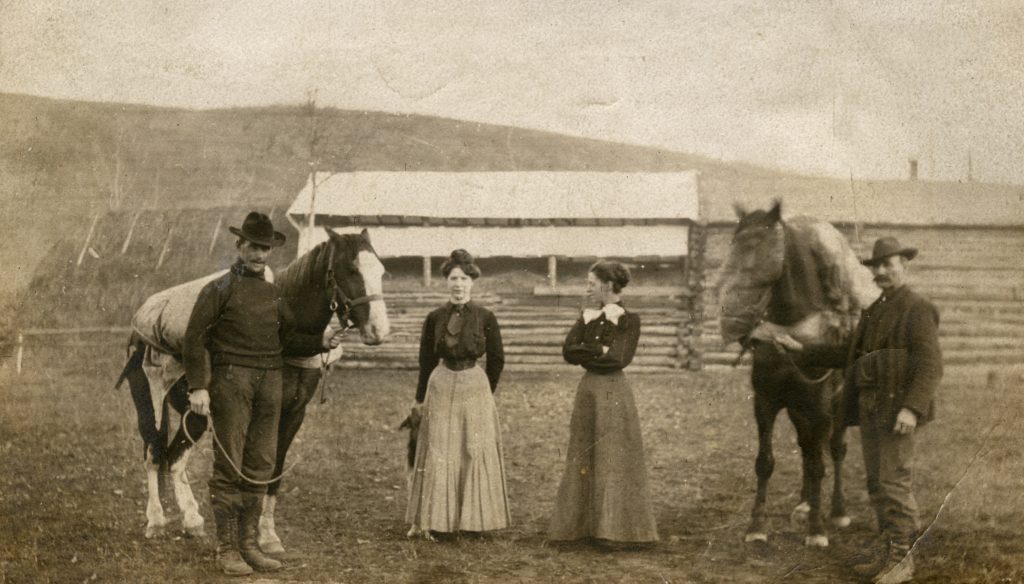
(Susan Coltrin collection)
Updated October 7, 2023
Next: Part 4 – The Family Reunites; End of the Swinehart Farm (1901-1914)